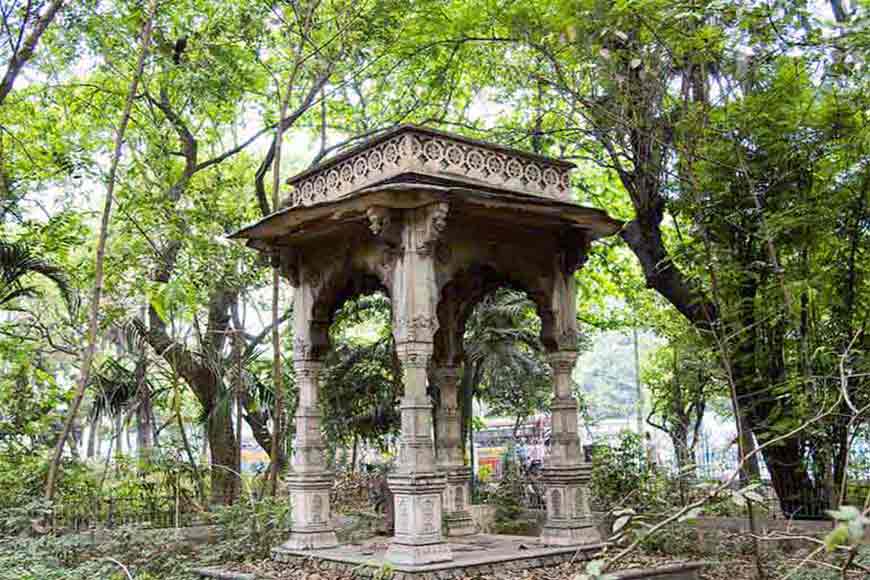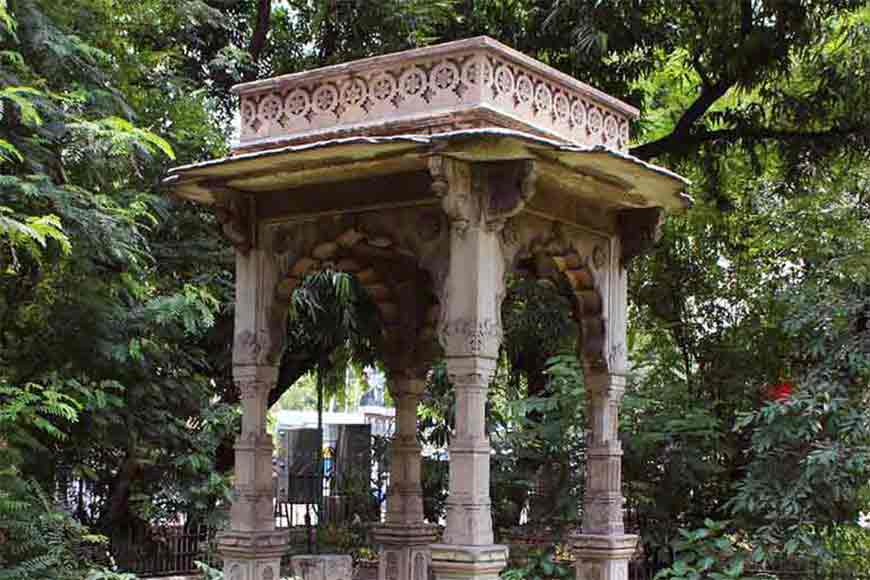Panioty, Kolkata’s marble drinking water fountain by the Greeks!

Since time immemorial, India had commercial relations with the West but after Vasco da Gama set foot on Indian soil, maritime trading activities increased manifold. The first among the ethnic communities to arrive in India was naturally the Portuguese. Later, Dutch, French, Armenians, British, Chinese and the Greeks followed their footprints. Calcutta was a confluence of cultures during colonial rule. It was a melting pot of diverse cultures who called the city their home. They left their mark across the city with a vast and varied collection of heritage architecture -- bungalows, churches, palaces and even synagogues – survive as testimony of their love for the city they called home. One such exquisitely beautiful but now abandoned monument is the Panioty Fountain.
The fountain was inspired by Demetrius Panioty, a member of the Panioty family who had moved to India from Greece as traders back in 1750. As trade opportunities in India declined, the Panioty family turned to other means of income. The most well-known Panioty was Demetrius. Son of Emanuel Panioty, he began his professional life at the young age of 16 in 1849 as a writer at the Bengal Secretariat. He was transferred to the Durbar Department of the Governor General in 1853. In 1880, Lord Ripon became the Governor General of India and Demetrius started serving as the Assistant Private Secretary to Governor General Ripon. He was so close to Lord Ripon that his wife Perrine was appointed as the interpreter to the Vicereine, Lady Dufferin. The eminence of Demetrius in British Indian Empire can be assumed from the fact that he was awarded the prestigious C.I.E. (Companion of Indian Empire, an honour awarded by Queen Victoria).

After Lord Ripon, he served several Viceroys until his death in Simla in 1895. In 1898, at the initiative of Lord Curzon, a marble drinking water fountain was installed for the public at the junction of Old Court House Street and Esplanade Row, in memory of Demetrius Panioty and his contributions towards the British Empire. The now-dilapidated memorial is situated at the north-west corner of Curzon Park aka Surendra Nath Banerjee Park (now renamed ‘Bhasha Uddyan), bang opposite Esplanade Mansion. Unfortunately, due to decades of negligence and consequent lack of maintenance, this beautiful monument lies in a state of disrepair. The overhanging parts of the roof are severely damaged.
A finely crafted Jaipur marble pavilion, this attractive piece of architecture is built in the Mughal style. The nine-foiled cusped arch on each of its four faces indicates the prominence of Islamic architectural style. But the deep overhanging eaves are severely damaged and need some urgent repair. The beautiful motifs on each of the four columns and arch are mostly intact. A Biblical quote is inscribed on the top of one arch -- ‘A good name is rather to be chosen than great riches.’ On the eastern side there is an inscription as follows – ‘In Memory of Demetrius Panioty C.I.E. Assistant Private Secretary to the Viceroy who died at Simla July 17th, 1895.’ On the western side it is inscribed – ‘This Fountain was erected as a tribute to faithful and assiduous service extending over a period of forty-two years. By the Viceroys and Private Secretaries who gratefully remember it. AD 1890.’ The fountain is surrounded by an overgrown garden and there is no plaque to draw attention to this heritage monument.
Satyajit Ray used this monument as the location for his 1958 masterpiece, Parash Pathar (The Philosopher's Stone) where the protagonist of the film, played by Tulsi Chakraborty, finds the philosopher’s stone right here on a rainy day.










